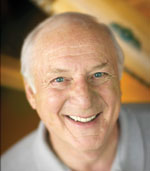Proficient Pilot
WUVHRKDBGM
 When I was preparing for my private pilot “rating” in 1955, the night experience required by the Civil Air Regulations (CARs) consisted only of 10 takeoffs and landings. A cross-country flight at night was not required then as it is now.
When I was preparing for my private pilot “rating” in 1955, the night experience required by the Civil Air Regulations (CARs) consisted only of 10 takeoffs and landings. A cross-country flight at night was not required then as it is now.
My first cross-country at night as a private pilot was to be only a month after Fran Bera, my flight-test examiner, courageously signed my temporary pilot certificate. This was just hours after my good friend, Joe Stanley, called to ask if there was any reason why we could not rent my flight school’s Cessna 140 and “hop up to Vegas” that night. There was no reason I could think of, no reason at all. It didn’t matter that neither of us were old enough to gamble or that I had never before left the traffic pattern at night. I had a piece of paper that said I was qualified. Joe picked the Cessna 140 because it was the only airplane available to us with an electrical system.
After taking off from California’s Santa Monica Airport, I turned away from the Pacific Ocean, pointed the nose eastward, and climbed over the vast carpet of lights that sprawled to the edges of the mountains ringing the Los Angeles Basin. No sweat, I thought. Night cross-country is no big deal.
I nudged the little 140 toward the northeast, through the Cajon Pass, and into the hollow darkness of the Mojave Desert. My enthusiasm and confidence slowly began to wane as I worked with increasing diligence and decreasing success to match the sparse lighting patterns on the desert floor with the symbols on my chart. The farther we flew, the more confused I became. This was not what I had expected.
There was a low-frequency, four-course range along our route, but the little 140 did not have a low-frequency receiver. Nor did it have an omni receiver to pick up that new omnirange shown on the chart. Even if we had had such equipment, I would not have known how to use it. All of my navigation training took place in the confines of an Aeronca Champ, and the only equipment upon which I had learned to rely was the compass and the clock. So it was that I attempted to dead-reckon my way to Las Vegas. If only I could have found a few checkpoints with which to verify en-route progress. I found nothing reliable. Droning through the darkness seemed only to increase doubt and fear. I had no idea where we were, and rivulets of perspiration formed on the back of my neck.
My attention was suddenly arrested by a rotating beacon some distance ahead and to my right. I frantically searched the chart for an airport along our route. There was none. Then I realized that this was not a green-and-white beacon; it was white and white, an airway beacon, one of thousands placed along federal airways to lead wayward pilots through the night sky. I had read about these guiding lights, but had never before seen one. There also was supposed to be a pair of red “course lights” associated with the airway beacon, lights beamed in each direction along the airway to provide cross-track guidance. I could not see a course light, confirming that I was not on the airway (Amber 2).
Because the beacon was to the right, I assumed that we were left of the airway and made a 90-degree turn to the right so that our left wingtip pointed at the beacon. The idea was to fly a large, circular swath around the beacon until eventually seeing (intercepting) one of the on-course beams. Several minutes later—it seemed like an hour—I could see a red directional beam, which meant that we had returned to the airway. At that point, I turned directly toward the beacon.
As we got closer to the beckoning light, I saw that the on-course beam was flashing a G in Morse code. I quickly returned to my chart and discovered that this particular beacon was 56 statute miles southwest of our destination. I cannot describe the flood of relief that comes from fixing one’s position in the void of the nighttime Mojave Desert.
The mid-1950s were the heyday of the airway-beacon system. Approximately 2,500 of them “illuminated” the airways across the United States. They were installed at 10-mile intervals. Pilots flew along difficult routes simply by flying from one beacon to the next.
The letter W identified the first beacon along an airway, and U identified the second. The letters V, H, R, K, D, B, G, and M represented the next eight beacons. After that, the sequence of letters repeated themselves over and over again until reaching the other end of the airway. Pilots presumably knew their positions within 100 miles, so it was unlikely that one G beacon, for example, would be confused with another (although I am certain that there have been times in the pre-GPS era when I did not know where I was within 100 miles).
It helped to memorize the sequence of beacons: WUVHRKDBGM. No one seems to know why this particular sequence was used, but a mnemonic was developed to help us remember it: “When undertaking very hard routes, keep direction by good methods.” I would have preferred something like, NFREGJALOP (night flying requires exercising good judgment and lots of petrol).
You probably can think of something better.
Barry Schiff has many years of experience as an experimental test pilot in light airplanes. Visit the author’s website.


